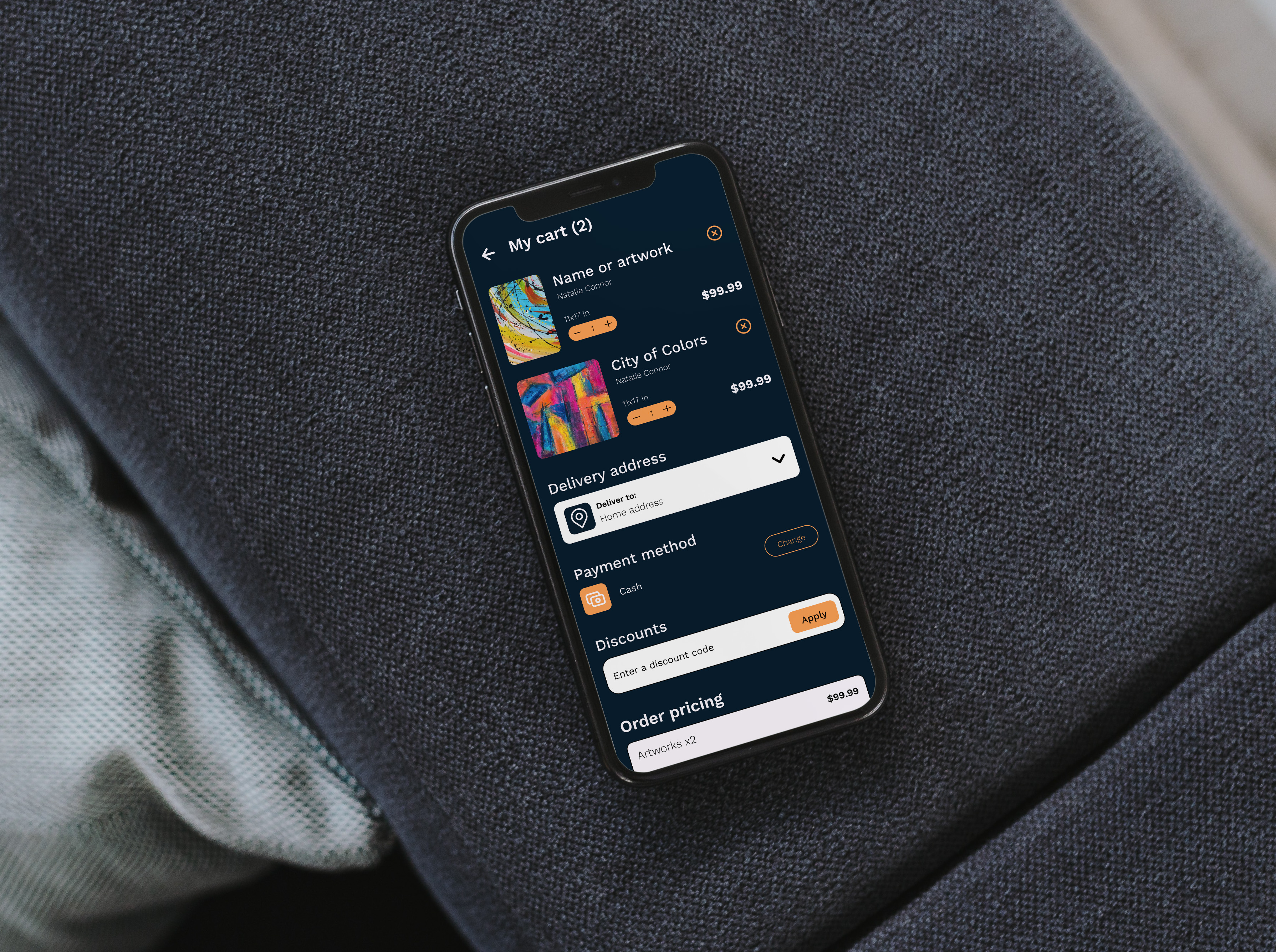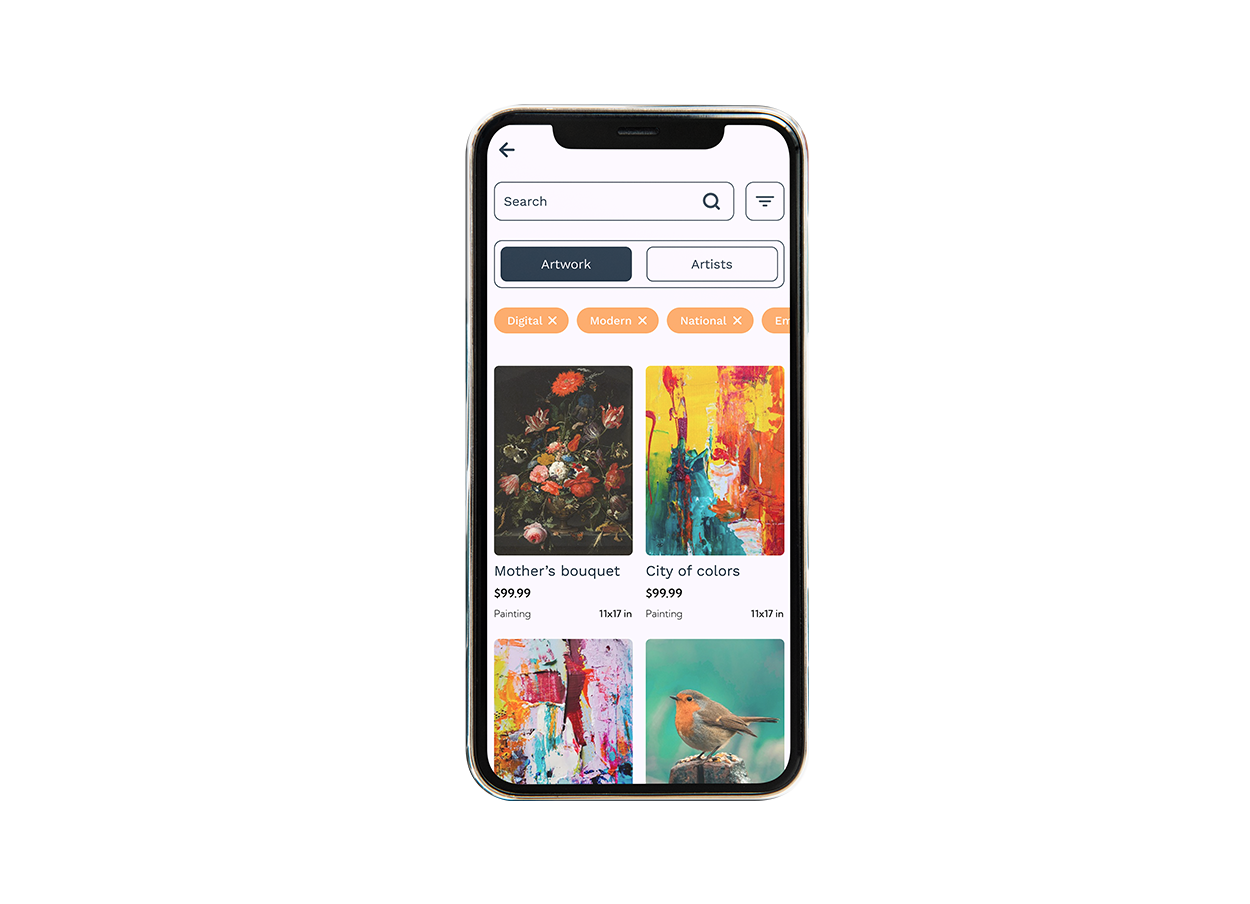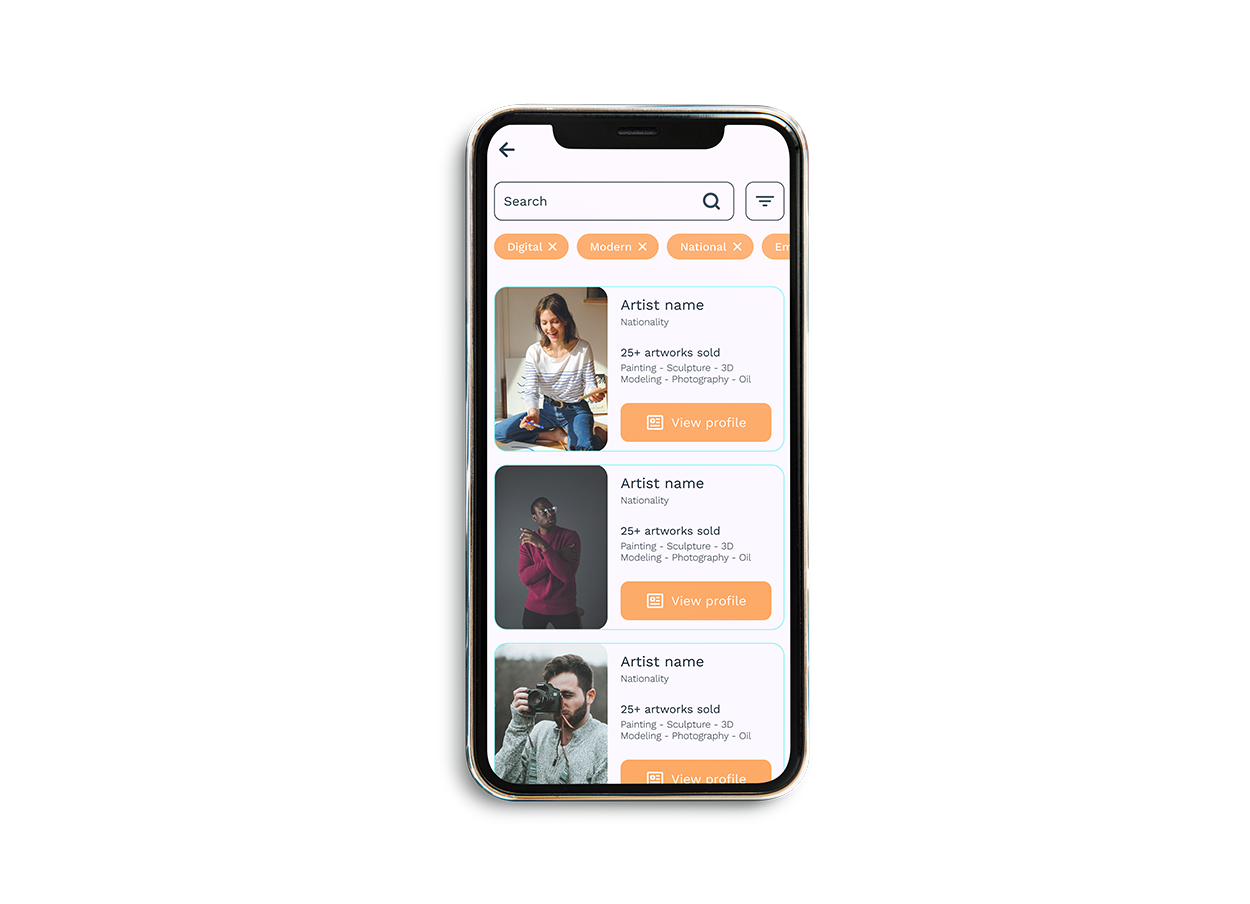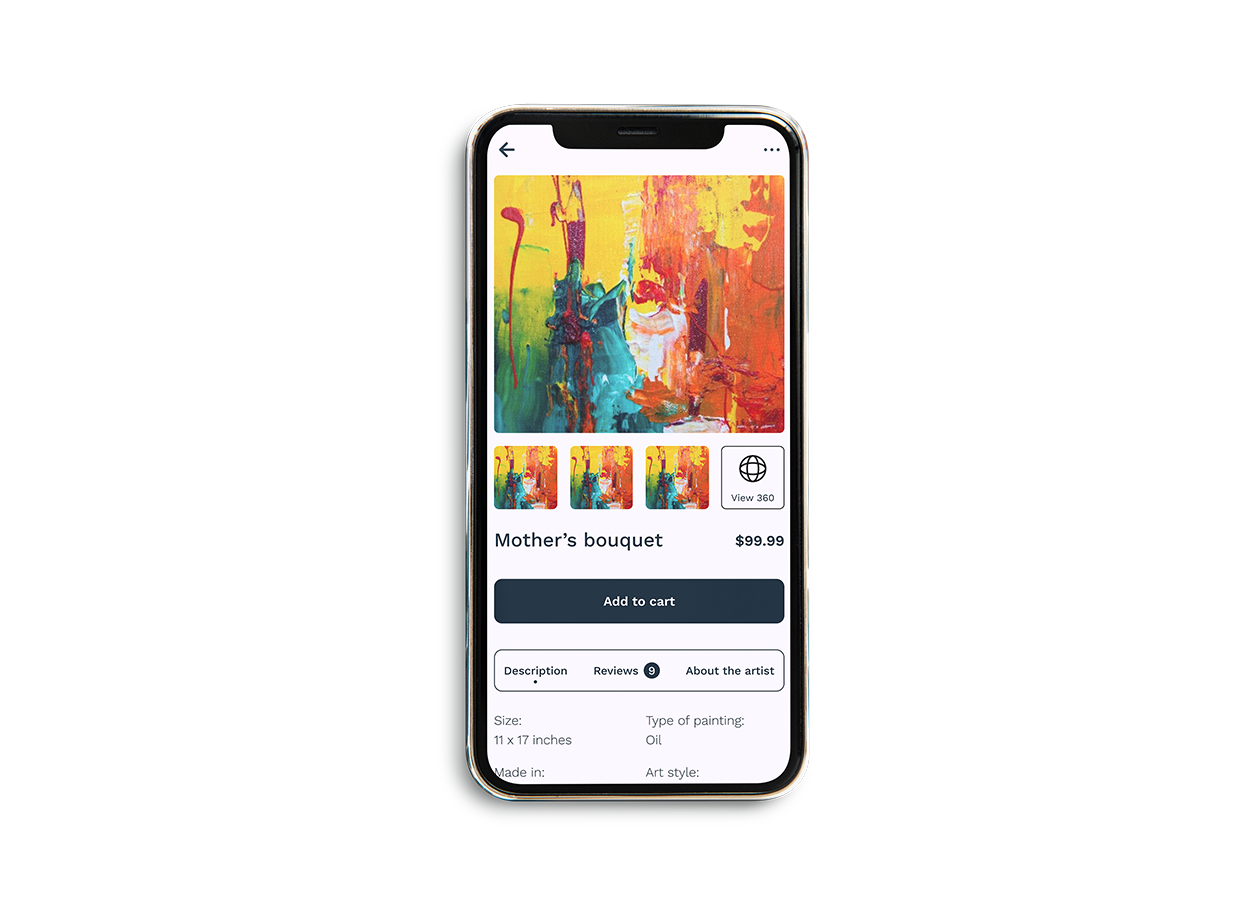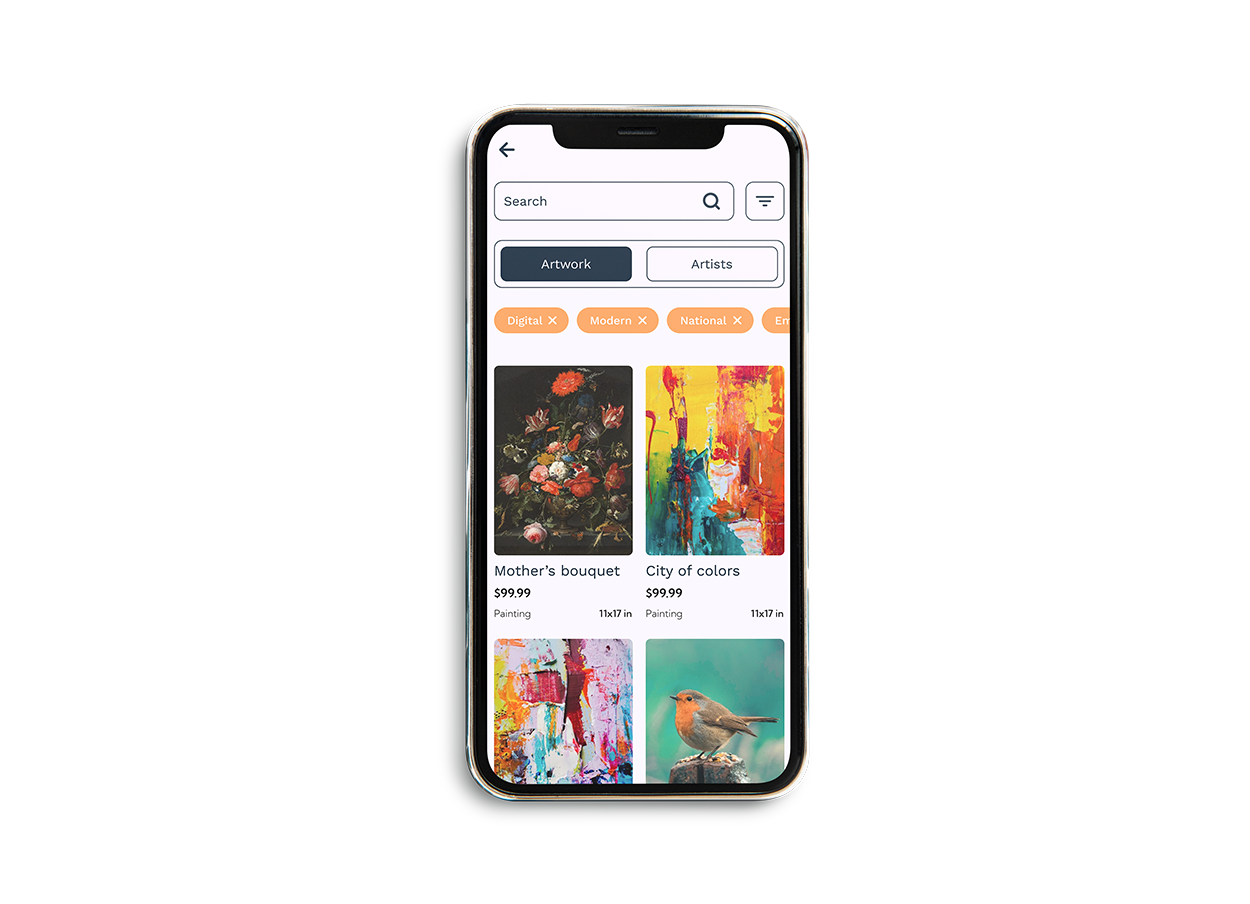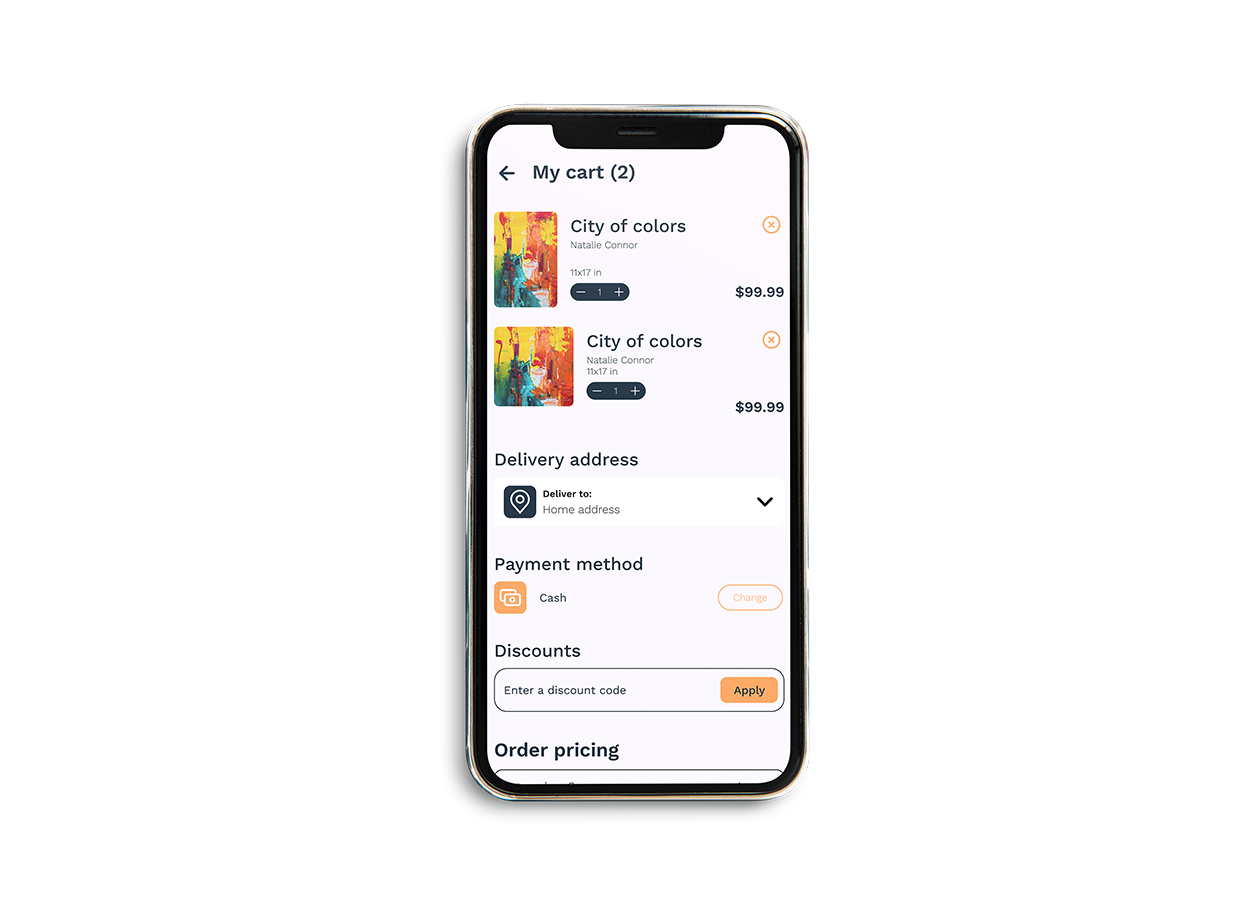Problem statement
Browsing for art can be daunting, not having enough information on an artwork of interest, pressure from different sources or not being able to purchase the way the user wishes can be proven difficult at times.
Goals
Offer a solution that users feel comfortable using to purchase artwork, browse their favorite artists.
Initial process
Next, I was tasked with making mid/high-fidelity wireframes of the initial pages to apply the redesign taking into account the new changes proposed from the information architecture flow from earlier. These were adapted for a mobile-first experience to assure the markup of the content would be applicable for tablet/folding devices and desktop screen sizes. As the new design options came along, the team and I would review them, iterate through necessary changes while consulting the viability of development for the new visual approach on the pages.
Understanding the user
The user research was based off from users who have purchased an artwork within the last six months and ranging from 18 to 60 years of age. Their professions varied from college freshman students, entrepreneurs, lawyers and house professions within the urban area.
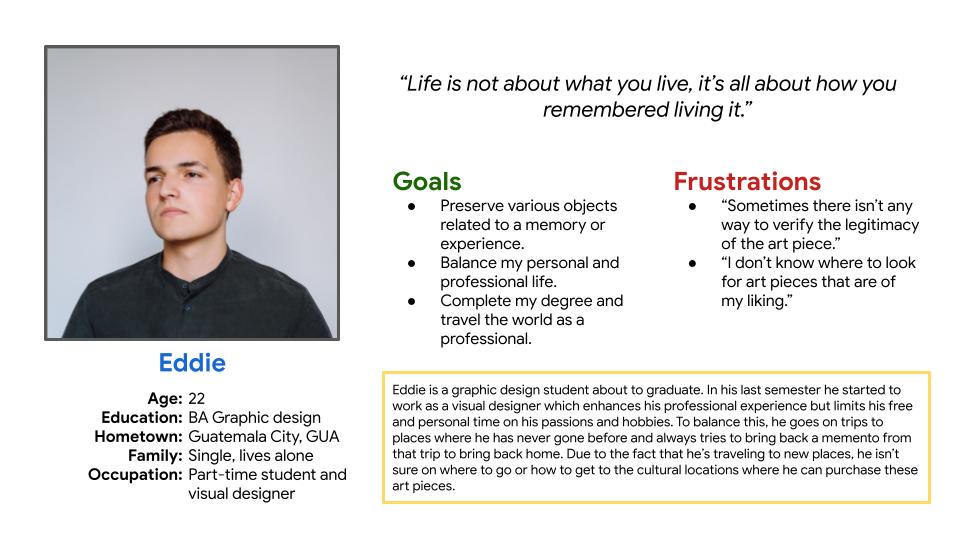
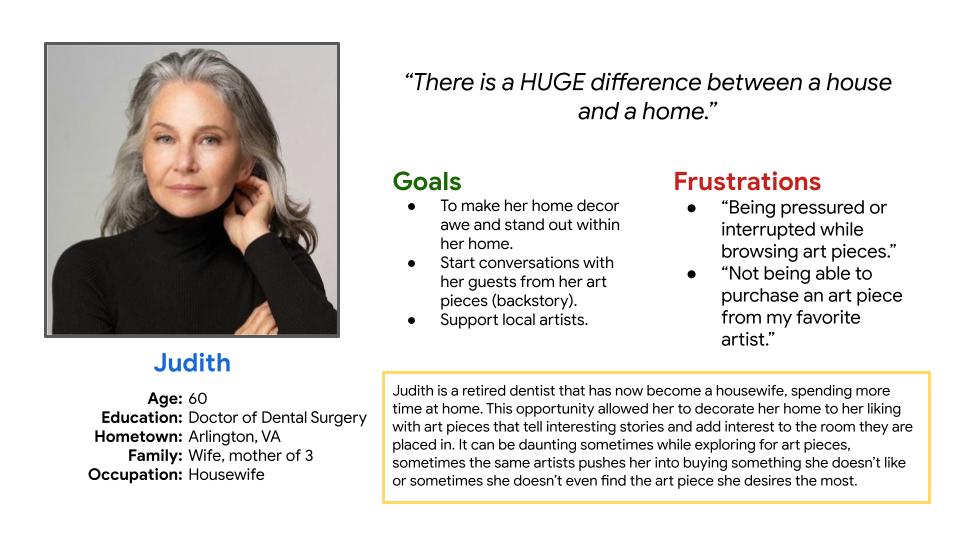
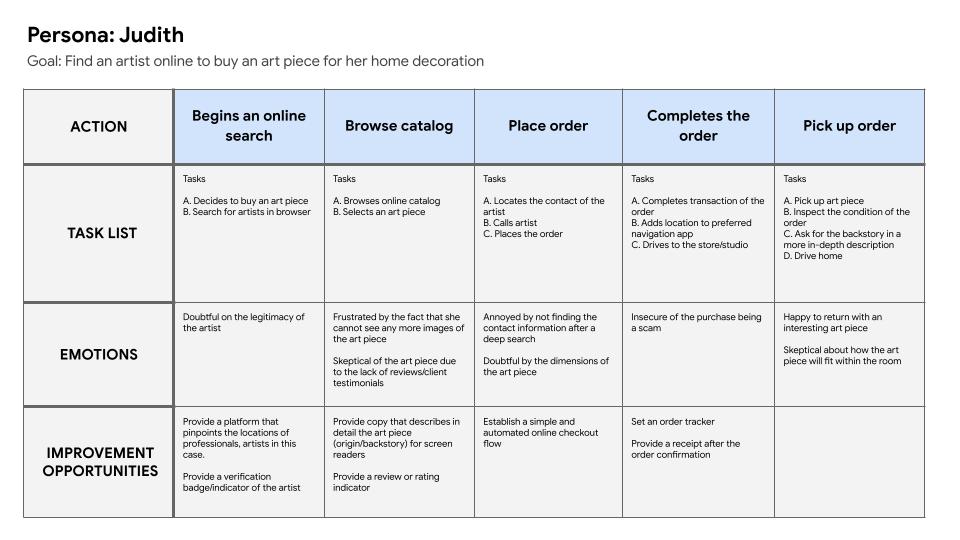
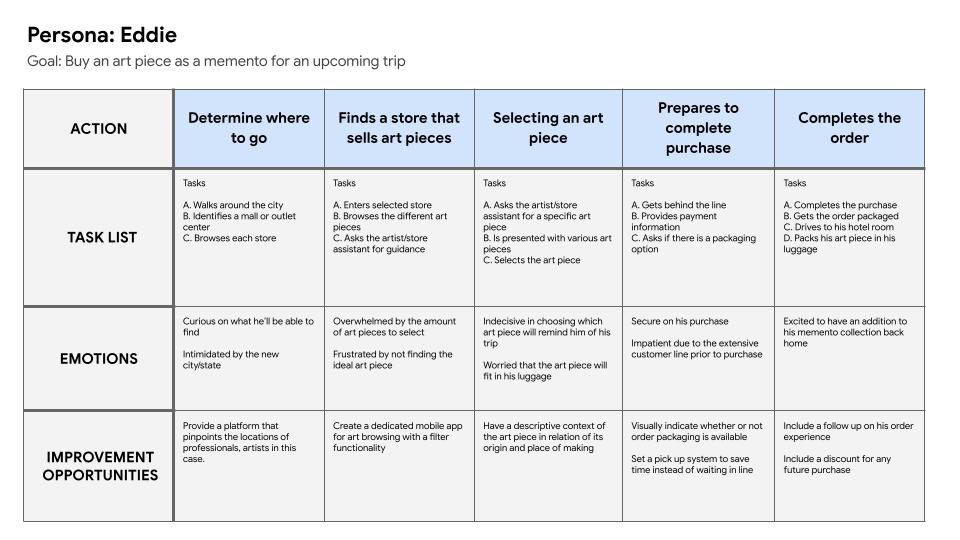
pain points
Users were pressured when browsing artwork being in a physical or digital manner.Users lacked the information to get to know the artwork or artist of interest.Users didn’t have a direct way to browse the catalog of their preferred artist, let alone finding new ones within their desired area.User didn’t know the dimensions of the artwork of interest or the preview of the subject matter within their home/office.
Competitive audit
who are the key competitors?
Our key competitors are Artfinder, an artwork selling platform that offers sustainable, accessible, affordable and a joy to discover art pieces online. Offering a gift card program, a featured artists section, customer reviews with a memorable visual identity.
Other competitors like Singulart and Artsy, who focus on a global sales as well as auction of high-end artwork that offer interesting features like filter by designer name/nationality, and more.
A direct competitor is Saatchi Art, where the platform offers artist recognition, an AR filter to view an artwork in real time within your environment, as well as a visual search of queries.
What are the type and quality of competitors' products?
Artfinder is a platform that eases the functionality and search of artwork as well as the opportunity to connect with the artist behind the artwork and be up-to-date with any new pieces they put up for sale. It also emphasizes the option to send gift cards between users to ultimately increase sales and client retention. One key feature that it offers is customer reviews for their artwork showing an authentic aspect to the purchasing process. Last but not least, the branding is present throughout the entirety of the interaction.
Saatchi Art offers a website as well as a mobile application for user interaction as well as the option to view an artwork through an AR experience, giving the user the power to preview the placement of the subject matter. It also shares the professional background of the artists along with a short description of the creative process for the artwork at hand.
How do competitors position themselves in the market?
Artsy and Singulart position themselves in the high-end segment of users, offering more mature, sophisticated artwork reltated to an antique style. These platforms (web and app) are basic in their branding but simple to navigate and to use.
Saatchi Art and Artfinder position themselves as a more open-ended market segment, where the user can opt to search low-end artwork but with the satisfaction of intersecting with the product even before purchasing them through the intervention of augmented reality as well as the option for a refund within the first two to four weeks.
How do competitors talk about themselves?
Artsy and Artfinder describes itself as the platform for the people, claiming that there is something for everyone, emphasizing with the artist behind the artwork and establishing the opportunity for users to connect with the artists as well as the option to gift art to others through their friend referral programs.
Saatchi Art and Singulart market themselves as a place to invest in high-end artwork. It’s set to add an artistic value to your preferred environment and be the center of attention for gatherings, events and more.
Competitors’ strengths
Artsy
Diverse yet easy to understand and use dropdown navigation.
Artist search by nationality or region.
Art movement filter (in depth search for artwork).
Artfinder
Gift card program.
Artist subscription.
Inspiration section.
View of artist catalog.
Strong brand identity.
Saatchi Art
Visual search for artwork.
AR filter for product view.
Website and mobile app interaction.
Singulart
Frame on request for artworks.
Credential display of artwork.
Chatbot support.
User personas.
User journey map.
Competitors’ weaknesses
Artsy
Offering alternative text for screen readers.
Screen reader functionality.
Contrast on text.
Artfinder
Font contrast in weight and color.
Saatchi Art
Low quality images portraying artwork.
User flow in checkout process.
Little to no brand identity throughout its products.
Singulart
Poor mobile responsiveness.
Poor legibility for font sizes.
Chatbot icon disturbing the content behind it.
No unified icon set.
Gaps in the market
Los productos de la competencia se centran más en la vista de escritorio.
Los productos de la competencia brindan una descripción limitada de la historia de fondo de las obras de arte.
Los certificados de autenticidad son escasos y, a menudo, difíciles de entender.
No hay forma de comunicarse, conectarse o interactuar con un artista preferido y su obra de arte.
Oportunidades
Offer filter options for national artist or artwork.
Integrate a referral program for the product.
Offer a profile for the artist so that the users can interact and stay up to date with their latest artwork releases and catalog.
Establish a memorable brand identity for the product that harmonizes the user interaction and experience with their search for artwork.
Design process
digital wireframe
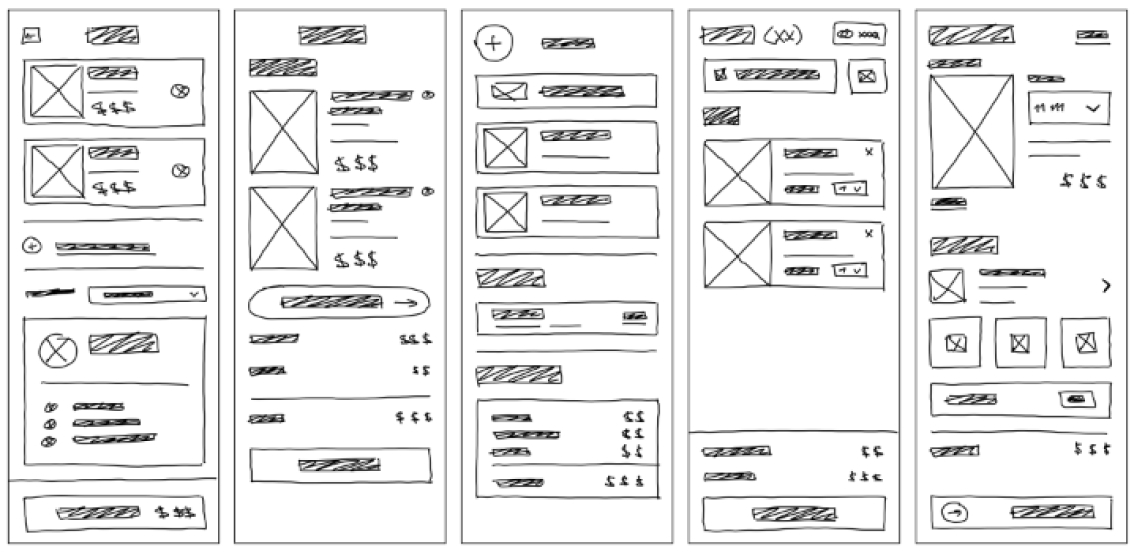
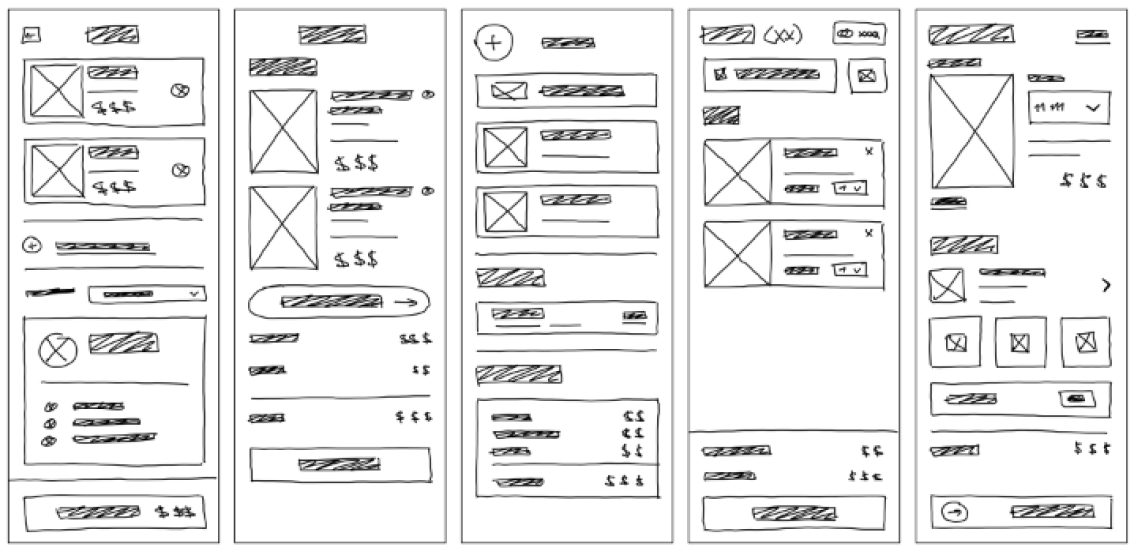

usability studies
round one findings
Information architecture restructure for navigation.
Restructure checkout page.Too many options to interact with.
round two findings
Accessibility issues with background.
Unusual artist icon within tab bat.
No coherence between action buttons for artwork cards.
